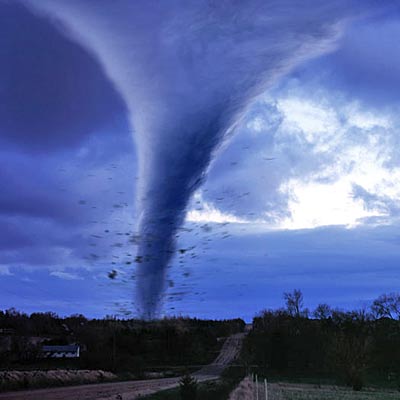
If you’ve become a regular reader of Straight, No Chaser (thank you!), you will note the recurring theme of prevention. There’s often just not enough time to act in the midst of a life-threatening emergency. Today, I’m just asking you to put together a simple contingency, emergency supplies kit for whatever disaster may befall you and your family. Should you ever need it, I suspect you’ll be glad you did. The disaster you’re preparing for could last hours or more than a few days. Depending on where you live, it could be a hurricane, tornado, blizzard, or wildfire. Or maybe you’ve just become trapped inside your home; maybe you’re trapped outside your home, and your children are trapped at home. You might not have access to food, water, or electricity. With preparation of emergency water, food, and a disaster supplies kit, you can provide for and protect your entire family.
Without getting precise or complicated, it’s a very good idea to assemble a basic collection of items in the event of any emergency or disaster. All of this should sound basic and obvious, but, unless assembled and at the ready, you might not be able to access what you need. It would be good to strategically place kits at home, work, and/or car. Also consider any unique health and medical needs of your family, and include these in your kit. Store at least a 3-day supply, and if at all possible, up to a 2-week supply that will cover each member of your family. Don’t forget to consider your pets. Here’s a list of essentials. Use it to customize and develop your kit.
- Water—one gallon per person, per day. This is a must. Think one half-gallon for drinking and another for food preparation and hygiene. If you are unable to store this much, store as much as you can without making your kit too difficult to maneuver. You can conserve water and energy of water by reducing activity and staying cool.
- Food—nonperishable, easy to prepare items (Don’t forget the can opener.)
- First aid kit
- Medications (7-day supply) and any supplies needed to administer them
- Flashlight
- Battery powered radio (will last longer than the charge on your smartphone)
- Cell phone with chargers
- Extra batteries for everything
- Multipurpose tool
- Sanitation and personal hygiene items
- Copies of personal documents (birth certificates, insurance policies, medication list and pertinent medical information, proof of address, deed/lease to home, passports, etc.) with family and emergency contact information
- Extra cash
- Emergency blankets and towels
- Area maps
- Extra house and car keys
- Protective masks
- Rain gear
- Work gloves
- Tools/supplies for securing your home
- Extra clothing, hat, and sturdy shoes
- Duct tape
- Something to cut with (scissors, pocket knife)
- Household liquid bleach
- Entertainment items and other creature comfort items to help maintain your sanity
Pack the items in easy-to-carry containers, label the containers clearly, and store them where they would be easily accessible. Rollable trash containers and backpacks are very good for this purpose. In a disaster situation, you may need access to your disaster supplies kit quickly—whether you are sheltering at home or evacuating.
So there you have it. I’ve tried to be basic. Much more detailed information is available, and I’d suggest you tailor your kit to what types of disasters are most likely in your area. Take an hour and do this. Without a good disaster plan and kit, the disaster itself will only be the first wave of trauma to hit.
Thanks for liking and following Straight, No Chaser! This public service provides a sample of what http://www.SterlingMedicalAdvice.com (SMA) will offer beginning November 1. Until then enjoy some our favorite posts and frequently asked questions as well as a daily note explaining the benefits of SMA membership. Please share our page with your Friends on WordPress, and we can be found on Facebook at SterlingMedicalAdvice.com and on Twitter at @asksterlingmd.
Copyright © 2013 · Sterling Initiatives, LLC · Powered by WordPress

I want to add an extra layer of protection for your readers. This well put together list confirms information that I gleaned while reading “The Unthinkable: Who Survives When Disaster Strikes” Author Amanda Ripley. This talked about disasters from World Trade Centers to Earthquakes and beyond. Many people turned back to help, many others sense of self preservation was almost immediate.
I bring this up because in many cases, people will fail to practice what to do in case of emergency. The chemical imbalance of adrenaline could be the difference to survival. Be mentally prepared for disaster and do an emergency evacuation of your home within the NEXT 30 days. Preparation can save your lives.
“Because they had gone through disaster preparation at home, they were less panicked and able to help with the evacuation. Thanks to them, no lives were lost.” Ripley
Well done, Madison. My goal is to entice everyone to start off by creating a basic survival kit. I trust that once people realize how simple this is, they’ll become inclined to dig deeper in the weeds and become even more prepared. There are many great references on natural disasters, and I encourage everyone to know their surroundings and risks. Develop what works for you within your means and abilities. Thanks for the comment.